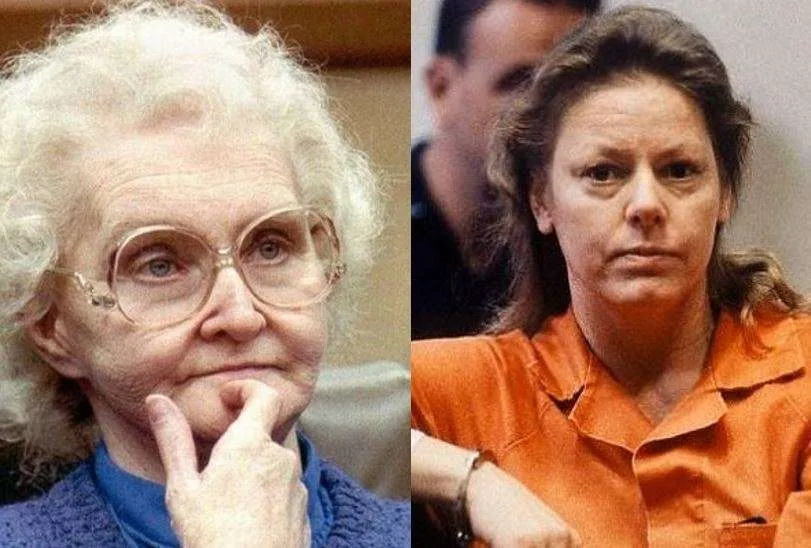Table of Contents
Have you ever read about Menendez Murders? Yes, they were two brothers who killed their parents On August 20, 1989 at New York. Despite the fact that most famous female serial killers are uncommon, they have made their imprint on history. See our list of 7 most famous female serial killers.
#1 Nannie Doss
#2 Aileen Wuornos
#3 Dorothea Puente
#4 Miyuki Ishikawa
#5 Judias Buenoano
#6 Karla Homolka
#7 Carol M. Bundy
There’s a wealth of information below if you’re interested in female serial killers from a historical perspective, want to know where they came from, or what drove them to kill, read followings about most famous female serial killers to get more information.
#1 Nannie Doss
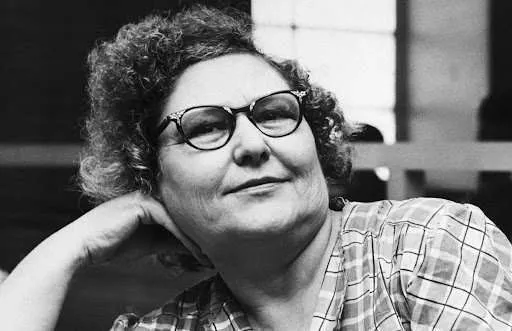
Birthday: November 4, 1905
Died At Age: June 2, 1965 (aged 59)
Born In: Blue Mountain, Anniston, Alabama
Notorious As: Serial Killer
Nanny is one of most famous female serial killers. As a wife and mother in Tulsa, Oklahoma, Nannie Doss was a welcoming presence. She was a coldblooded killer who nearly wiped out her family members on her own, but she was hiding in plain sight. She was nicknamed as Giggling Granny, The Lonely Hearts Killer and The Black Widow
Her first victims were her own children. When her first husband, George Frazer, arrived home one day in 1920, he discovered the bodies of their two children on the kitchen floor. Frazer was unconvinced by Doss’ story that the poisoning was an accident. He walked away and never returned.
“Stomach problems,” among other ailments, continued to kill Doss’ family and friends until her fifth husband suddenly passed away.
He wasn’t as simple minded as the previous doctors and didn’t simply believe everything she said. There were massive arsenic levels found when he ordered a post mortem to be done.
The exhumation and testing of the bodies of doss’ husbands, family members, and children was carried out. Arsenic poisoning claimed the lives of Doss’ two infant children, four husbands, two sisters, her mother, and a nephew.
She confessed to her crime in 1964, when police were able to use this information in their investigation. The following year, she died of leukemia.
#2 Aileen Wuornos
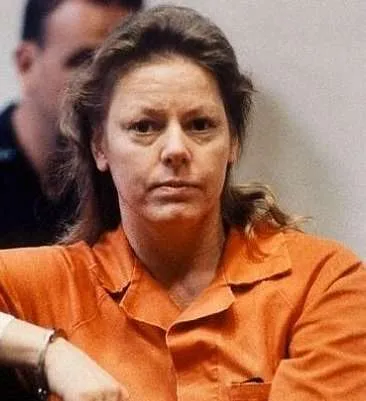
Birthday: February 29,1956
Died At Age: October 9, 2002 (aged 46)
Born In: Troy, Michigan, United States
Notorious As: Serial Killer
Richard Mallory, Dick Humphreys, Troy Burress, David Spears, Walter Gino Antonio, Peter Siems, and Charles Carskaddon were among the persons found killed along the roadways of northern and central Florida between December 1989 and September 1990.
Items belonging to Mallory and Antonio were pawned at Daytona Beach, and through thumbprints left on the pawn shop cards, the alias identities used were tracked to Wuornos.
Wuornos admitted to the six men’s murders, stating that she was picked up by the guys while working as a highway prostitute and shot them in self-defense when they attempted to sexually assault her.
After a jury trial in Volusia County, Wuornos was found guilty of the murder of Richard Mallory and condemned to death. During the trial, the State was allowed to present proof of Wuornos’ involvement in many previous murders.
Mallory had previously gone to prison for Attempted Rape, which was uncovered when she was on death row. Wuornos pled no contest to the other 5 men’s killings and received the death penalty in each case.
Wuornos and her lawyer had sold the movie rights to her narrative just two weeks after her incarceration. In her case, investigators followed suit. The case spawned a slew of novels, films, and even an opera about “America’s first female serial murderer.”
Leo Dale Pittman, Wuornos’ father, was a child abuser and sociopath who committed suicide in prison in 1969. Wuornos was fourteen years old when she became pregnant. She dropped out of school, fled home, and began travelling and prostitution shortly after. Wuornos had a prior armed robbery conviction from 1982.
Final Course:
Wuornos was given a cup of coffee instead of the usual farewell dinner, which could have been anything she desired for about $20.
Final Thoughts:
“I’d just like to say I’m sailing with the rock, and I’ll be back like Independence Day, with Jesus June 6. Like the movie, big mother ship and all, I’ll be back.”
Film
Charlize Theron and Christina Ricci featured in the theatrical thriller Monster (2003). Wuornos’ tale is told from her upbringing through her first murder conviction. For her role as Aileen Wuornos in the film, Theron won the 2003 Academy Award for Best Actress. Jean Smart also starred in the 1992 television film Overkill: The Aileen Wuornos Story.
#3 Dorothea Puente
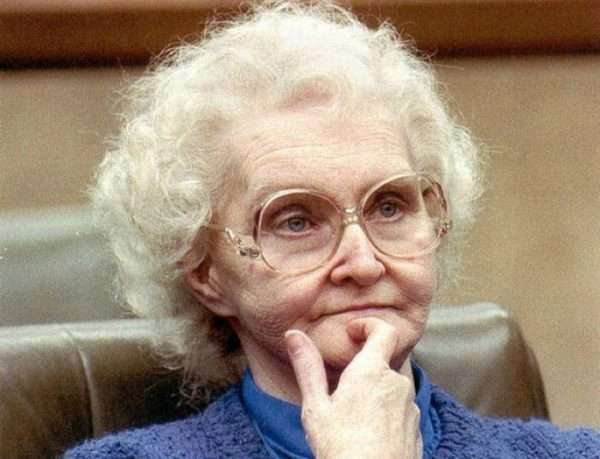
Birthday: January 9, 1929
Died At Age: March 27, 2011 (aged 82)
Born In: San Bernardino County, California
Notorious As: convicted serial killer
Her parents were both drunkers when she was born in San Bernardino County, California. Her father worked as a picker of cotton. She had to forage for food because both of her parents abused her. Puente’s father passed away when she was four years old.
Her mother died when she was six years old, and she was placed in an orphanage until she was adopted by relatives in Fresno, California. She eventually lied about her upbringing, claiming that she was one of 18 children born and reared in Mexico.
She married for the first time in 1946, but her husband died of a heart attack two years later. She tried to fabricate checks for money, but she was detected and sentenced to a year in prison, after which she was released after six months.
She was impregnated by a man she hardly knew shortly after her release and gave birth to a child girl, which she had to give up for adoption. She married Axel Johanson, a Swede, in 1952 and had a 14-year violent marriage with him.
Puente began renting an upstairs apartment at 1426 F Street in downtown Sacramento in 1981, according to California Court of Appeal records. The nine murders for which she was prosecuted in 1990 (three of which she was found guilty of in 1993) were linked to her upstairs flat rather than her former 16-room boarding house.
Ruth Monroe, 61, moved into Puente’s upstairs flat at 1426 F Street in April 1982, but died soon after from an overdose of codeine and tylenol. The woman was despondent, according to Puente, since her spouse was terminally ill. They took her word for it and ruled the occurrence a suicide.
After a 74-year-old pensioner called Malcolm McKenzie accused Puente of drugging him and then robbing him, the cops returned a few weeks later. On August 18, 1982, she was found guilty of three counts of stealing and sentenced to five years in prison. While in prison, she began communicating with Everson Gillmouth, a 77-year-old retiree from Oregon.
Puente was freed in 1985 after completing only three years of her sentence, and he was waiting for her in a red 1980 Ford pickup when she was released. Their romance blossomed rapidly, and the couple was soon planning their wedding. They opened a joint bank account and rented the upstairs apartment at 1426 F Street in Sacramento for $600.00 per month.
Puente hired Ismael Florez to place wood paneling in her flat in November 1985. Puente handed him a red 1980 Ford pickup in good shape in exchange for his labor and an additional $800, which she claimed belonged to her boyfriend in Los Angeles who didn’t need it.
Dorothea Puente then requested that Florez construct a box measuring 6 feet by 3 feet by 2 feet to contain “books and other objects.” Florez was then tasked with transporting the filled and nailed-closed box to a storage facility. Florez consented, and Puente came along with him.
But on the way, she directed him to pull over to the side of the road in Sutter County and drop the box on the riverbank at an unofficial home dumping site. Florez was perplexed and inquired as to why, but Puente informed him that the contents of the package were nothing but garbage.
A fisherman noticed the box about three feet from the riverbank on January 1, 1986, and reported it to the authorities. Inside, investigators discovered the body of an elderly man, which was highly deteriorated and unidentified. Meanwhile, Puente continued to receive Everson Gillmouth’s pension and wrote to his family, explaining that he had not communicated with them because he was ill.
She also ran a “room and board” company, bringing in 40 new residents each year (most of whom were alcoholics and drug addicts). Despite the fact that she was generating a fair profit, she want more and began to cruise clubs in search of new customers.
Police discovered Dorothea Puente’s remains buried in her lawn on November 11, 1988. Seven bodies were discovered in the end. Puente was charged with nine murders in total, was found guilty of three, and is currently serving two life sentences.
Dorothea began communicating with Shane Bugbee in 1998, and they conducted a lengthy interview over the course of several years. She started mailing him recipes, and the book “Cooking With A Serial Killer” was published in 2004. A lengthy conversation, about 50 recipes, and several works of prison art given to Bugbee by the convicted killer were all featured.
#4 Miyuki Ishikawa
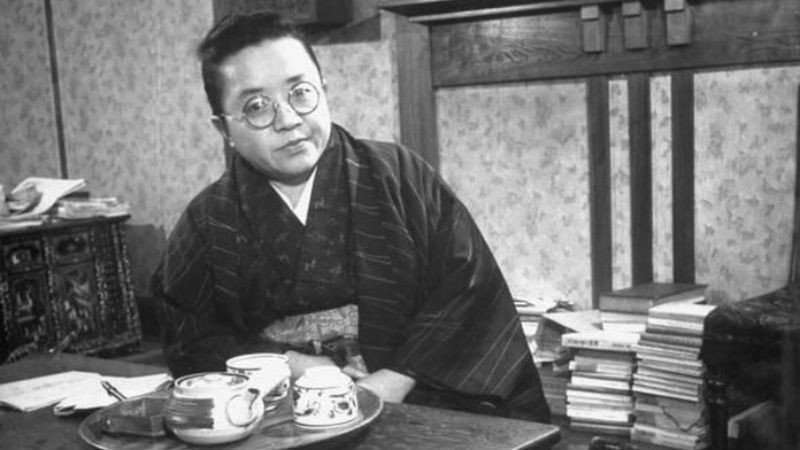
Birthday: 5 February 1897
Died At Age: 30 May 1987 (aged 90)
Born In: Japan
Notorious As: convicted serial killer
Ishikawa Miyuki was a Japanese midwife and serial murderer who is suspected of murdering several infants in the 1940s with the help of several accomplices. Her victims were estimated to number between 85 and 169, but the most common figure is 103.
When she was ultimately apprehended, Miyuki was given a four-year sentence by the Tokyo High Court, which was surprisingly short considering Miyuki’s crimes resulted in a death toll that is still unmatched by any other serial murderer in Japan. The occurrence was described as “unbelievable and awful” by writer Kenji Yamamoto (Yamamoto Kenji) in a Children’s Rainbow Center report. At least 103 neonates have been murdered.
There were a lot of infants in her maternity hospital in the 1940s, and Miyuki Ishikawa found herself in a pickle. Many of these infants’ parents were destitute and unable to properly raise their children without financial hardship, and she was unable to assist the infants due to a lack of social and humanitarian services.
Ishikawa chose to neglect a large number of children in attempt to solve this problem, and many of them perished as a result of his actions. The actual number of victims is unknown, but at least 103 newborns are thought to have been slain. Almost all of the other Kotobuki maternity hospital midwives were disgusted by the practice and resigned.
She afterwards sought to extort money in exchange for the deaths. She and her husband, Takeshi, asked the parents for significant quantities of money, stating that it would be less than the true cost of rearing these unwanted children. Shiro Nakayama, a doctor, was also a part of the scam and helped the couple by forging death certificates. Their acts were ignored by the Shinjuku ward office.
This episode is widely recognized as the catalyst for the Japanese government’s consideration of abortion legalization. One of the theories surrounding this tragedy was that it was caused by an increase in the number of unwanted babies delivered in Japan. The Eugenic Protection Law (now known as the Mother’s Body Protection Law) and a nationwide examination system for midwives were established on July 13, 1948. Abortion for financial reasons became allowed in Japan on June 24, 1949, according to the Eugenic Protection Law.
#5 Judias Buenoano
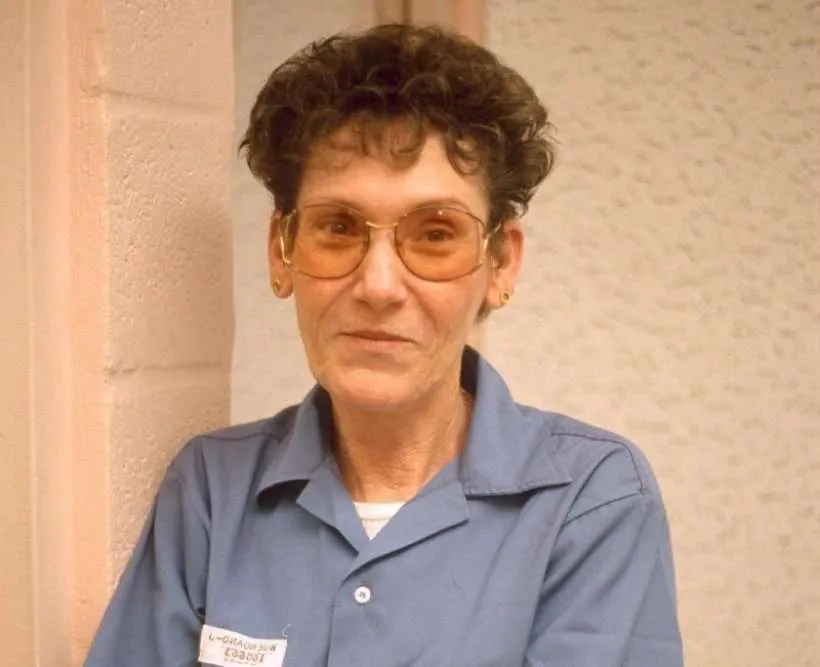
Birthday: April 4, 1943
Died At Age: March 30, 1998 (aged 54)
Born In: Quanah, Texas, United States
Notorious As: convicted serial killer
Following her 1985 conviction for poisoning her husband, Air Force sergeant James Goodyear, in 1971, Buenoano, also known as the “Black Widow,” was executed in Florida’s electric chair.
Goodyear died just three months after returning from Vietnam, from symptoms that staff physicians were unable to pinpoint. After Buenoano became a suspect in another case, his body was excavated 12 years later and determined to contain arsenic.
Buenoano was sentenced to life in prison in 1984 after a jury found her guilty of killing her partially crippled 19-year-old son, Michael Goodyear. Michael couldn’t walk or use his hands since he was wearing hefty metal leg braces.
Judi took Michael and his younger brother James canoeing on the East River on May 13th, 1980. Unfortunately, the canoe capsized. James and Judi managed to escape out from under the upturned canoe, but Michael, who was held down by the heavy braces, drowned.
Buenoano was convicted of attempting to assassinate her boyfriend, Pensacola businessman John Gentry, in 1984 and sentenced to 12 years in jail by a jury.
Judi announced her pregnancy on June 25, 1983, and John went out to purchase some wine to celebrate. He was critically hurt when a bomb exploded as he started his car. Judi had been giving her vitamins, according to John.
She was not expecting a child and had planned a cruise for herself and her children. She had also just informed her pals that John was suffering from a fatal disease. Arsenic was discovered in several of the purported vitamin capsules that were collected.
She was never charged despite collecting more than $240,000 in insurance money from the murders of her husband, son, and lover in Colorado. In each of the Florida instances that ended in convictions, insurance benefits were also a factor.
Buenoano never confessed to any of the murders. Buenoano was the first woman to be killed in the state of Florida since 1848, and the third in the United States after the death penalty was reinstated in 1976.
#6 Karla Homolka
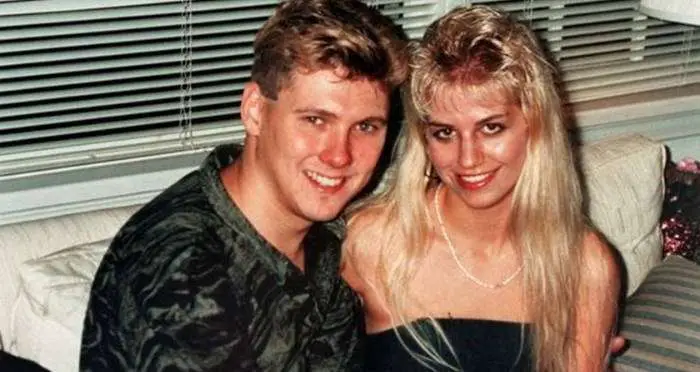
Birthdate: May 4, 1970
Birthplace: Port Credit, Ontario
Famous As: Serial Killer
Karla Leanne Homolka (born 4 May 1970 in Port Credit, Ontario, Canada), also known as Karla Leanne Teale and Leanne Bordelais, is a convicted Canadian serial killer. She made international headlines when she was found guilty of manslaughter in the rape-murders of two Canadian teenage girls, Leslie Mahaffy and Kristen French, in 1991 and 1992, as well as the rape and death of her sister Tammy.
In 1993, Homolka and Paul Bernardo, her husband and co-conspirator, were caught. Bernardo was found guilty of the killings of the two teenagers in 1995 and sentenced to life in prison with a dangerous offender classification, the harshest term permitted in Canada.
Homolka told police that Bernardo had molested her and that she had been an unwitting collaborator to the murders during the 1993 probe. As a result, she reached an agreement with prosecutors to get a 12-year prison sentence in exchange for a guilty plea to manslaughter.
However, later videotapes of the crimes were discovered, proving that she was a more active participation than she claimed. As a result, the agreement she made with prosecutors was called “Deal with the Devil” in the Canadian press. Homolka’s plea deal sparked public outcry that lasted until her high-profile release from jail in 2005.
She moved to the province of Quebec after her release from prison, where she married and had a son. In 2007, the Canadian press reported that she had changed her identity to Leanne Teale and left Canada with her husband and kid for the Antilles. In 2012, journalist Paula Todd discovered Homolka living in Guadeloupe with her spouse and three children under the name Leanne Bordelais.
#7 Carol M. Bundy
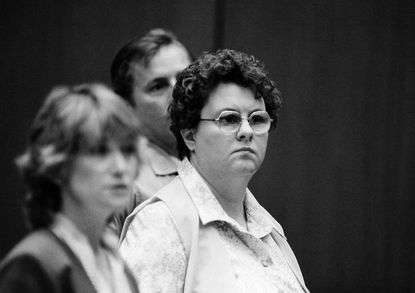
Birthdate: August 26, 1942
Died: December 9, 2003 (aged 61)
Birthplace: United States
Famous As: Serial killer
Carol M. Bundy was an America’s one of most famous female serial killers who lived from August 26, 1942 until December 9, 2003. After being convicted of a string of killings in Los Angeles during the late spring and early summer of 1980, Bundy and Doug Clark were known as “The Sunset Strip Killers.” Young prostitutes or runaways were among the casualties.
Bundy, a divorced mother of two from the San Fernando Valley, went to the police and claimed that her lover, Clark, had told her that he had murdered other young women. Bundy had shot them all with a rifle he had bought. Bundy first claimed she had no knowledge of the murders other than “what (Clark) told me.”
Bundy, who worked as a nurse, had shot, stabbed, and beheaded another lover, Jack Murray, just before going to the cops. Bundy later admitted to the murder, claiming it was in self-defense. Bundy later admitted to being there during one of the murders for which Clark was accused.
That murder occurred in a car parked behind an East Hollywood gas station. Clark allegedly shot a prostitute in the head while she was fellatioing, according to Bundy. Bundy had hired her for Clark’s birthday celebrations. Bundy, Clark insisted, was the shooter. Both agreed that they had jointly disposed of the body.
Clark has always claimed that Bundy and Murray were the ones who carried out the murders, and that he was just Bundy’s scapegoat.
Clark’s trial was a bleak depiction of the late-’70s San Fernando Valley underworld, a realm in which Bundy and Clark engaged in countless sexual exploits. Clark had a long sexual involvement with the 13-year-old girl who looked after Bundy’s children.
Bundy’s account of Clark taking the head off one of his victims, having oral sex with it in the shower, and storing it in his ice box was the centerpiece of the trial. Bundy’s testimony was crucial; the rest of the evidence presented against Clark was speculative. Furthermore, no forensic analysis comparing the body of the beheaded girl to Murray’s was ever conducted.
A piece of bloody scalp found in Murray’s van’s ceiling was among the evidence. At Clark’s trial, that evidence was addressed but not presented. Bundy agreed to a plea bargain and earned a life sentence in exchange for her testimony. Bundy died of heart problems in prison in 2003.
Source: Wikipedia, Murderpedia | All the information and photo credit about most famous female serial killers goes to respective owners. DM for any removal please
Related: 11 Most famous and weirdest last meal requests on death row
